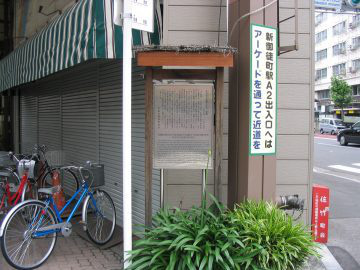
01. Remains of Satake Family's Residence and Satakeppara
2, 3, 4 chome, Taito
In the Edo Period there was a residence belonging to the Kubota Clan of Dewano-kuni (Akita Prefecture). The ruling family of this feudal clan was the Satake family and the residence is presumed to have been built at the end of the 17th century. The land which belongs to the residence covered almost all the 'areas of the eastern half of the present Taito 3 and 4 chome (the 3rd and the 4th blocks).
Satake Yosiatu, whose pseudonym was Shozan, and Odano Naotake, a clansman set up the foundation for a school of Western style painting called "Akita Ranga." A comic tanka poet of late 18th century called Tegarano Okamochi was also a fellow clansman. Thus, many intellectuals in the Edo Period were sprung here.
In the Meiji Period, the residence of the Satake family and neighboring samurai houses were removed and property soon returned to nature. Those empty lots were called "SATAKEPPARA" (Satake field). At present, the name of SATAKE has remained as "SATAKE SHOTTENGAI"(Satake shopping district).
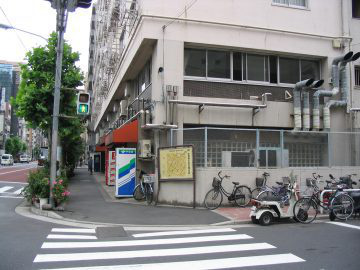
02. The remains of Shamisen Moat
1 chome 5, kojima
Facing the present day Kiyosubashi Street and running north-south along the western side of Kojima 1 Chōme marks the spot where, in 1630 the Torigoe River bed was widened to form what was to be called the Shamisen Moat based on the shape it assumed. A shamisen is a three-stringed musical instrument.
The water flowing from Shinobazu Pond to the Shinobu River passed through the Torigoe River onto the Sumida River via the Shamisen Moat. In docks along the moat, it was a thoroughfare for boats transporting fertilizer, lumber, vegetables, gravel, and other goods onto the Sumida River. Throughout the Edo (1600-1868) and the Meiji (1868-1912) Periods the moat functioned as an important entrepot.
However, with shifts in towns and the development of overland transportation at the end of the Meiji through the Taishō (1912-1926) Periods, the moat was eventually filled in and its traces disappeared.

03. Jinnai Shrine
3 chome 11-5, Asakusabashi
Jinnai Shrine was built it the beginning of the 17th century. Legend has it that a person called Jinnai, who learned sword-fighting from Miyamoto Musashi, was accused of breaching public order and sentenced to death. He contracted malaria, and later while in prison awaiting execution, he proclaimed that he would cure people with malaria if they prayed to him. Many people believed him-even years later.
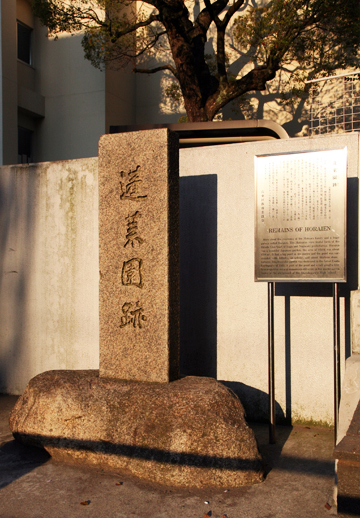
04. Remains of Horaien
5 chome 1-20, Asakusabashi
Here stood the residence of the Matsura family and a huge garden called Horaien. The Matsuras were feudal lords of the Hirado Clan (part of Saga and Nagasaki Prefectures). Horaien was a beautiful Japanese garden, the area of which was about 8580㎡. It had a big pond in the center and the pond was surrounded with hillocks, an arbor, and about thirteen stone lanterns. This beautiful garden was destroyed in the Great Kanto Earthquake of 1923. A part of the pond and a tall gingko tree (a cosmopolitan natural monument) still exist in the northeastern corner of the playground of the Shinobugaoka High School.
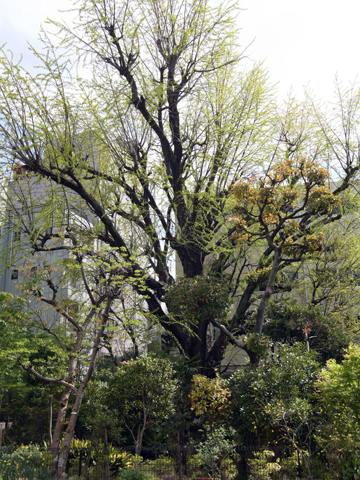
05. Ginkgo Tree of Former Horaien
Metropolitan Natural Monument
Shinobugaoka High School, 5 chome 1-20, Asakusabashi
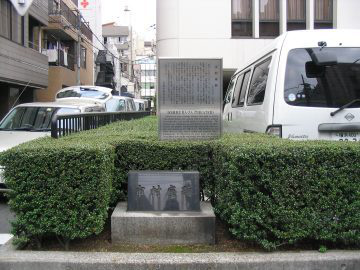
06. Ruins of Ichimura-za (Theater)
1 chome 5, Taito
Ichimura-za was a Kabuki Theater first built in 1634 in Nihonbashi Hukiya-Cho and in 1842 it moved to Asakusa Saruwaka-Cho and moved again to this location. The Ichimura-za Nakamura-za and Morita-za were the three famous and popular theaters in this area in the Edo Period, they were known as the “Edo 3 za”. The Ichimura-za was burnt down in 1893 and it rebuilt and renamed Tokyo Ichimura-za. In 1923 during the Great Kanto Earthquake, it was burnt down again and rebuilt, but when it burnt down again for the third time in 1932, it was not rebuilt and therefore lost forever.

07. The Site of Ito Genboku's Home and Inoculation Center
1 chome 30, Taito
In this area stood the Shosen-do which served as both the house and private school of the famous physician of Dutch style medicine Ito Genboku. Born into an agricultural family from Niiyama Village in the Province of Hizen (present day Kanzaki, Saga Prefecture) in 1800, Ito Genboku was later adopted by a physician from the Saga Domain. Under the tutelage of the German physician Philipp Franz von Siebold, Genboku engaged in Dutch studies in Nagasaki. After his training, he left for Edo and in 1833, established himself at this site. In 1858 he was appointed the personal doctor of the Shogun Iesada, and with his increasing fame he attracted many pupils.
Genboku was also responsible for establishing the first vaccination policies for the city of Edo. In 1980 the World Health Organization submitted the Declaration for the Global Eradication of Smallpox. Because many people succumbed to smallpox, the discovery of a vaccine by the Englishman Edward Jenner in 1796 became a decisive factor in the adoption of Western medical techniques in Edo Period Japan. In 1857 Ito Genboku, in conjunction with approximately 80 other people, sought funds to build an inoculation center in Kanda Otamagaike (present day Iwamoto-Cho, Chiyoda City). Their plan was completed the following year but, due to a fire, the center was temporarily relocated to Shitaya Izumibashi Street in 1859, before being rebuilt again in 1860. In that same year it came under the direct control of the Bakufu government as an official agency. From this time, it was successively transformed into the Institute for Western Medicine (Seiyo igaku sho), the Medical Institute (Igaku sho). the Medical School (Igakko), and the Great School of the East (Daigaku toko), before serving as the predecessor of the current the University of Tokyo, Faculty of Medicine.
The location of the inoculation center maintained by the Bakufu was just south of Ito Genbokus residence, in an area comprising the entire 28th and southern half of the 30th block of Taito 1 chome.
Further information can be found in the posted explanation at the designated Metropolitan Historical Site of Ito's grave located in front of the gate of Tenryu-in Temple at Yanaka 4-4.















